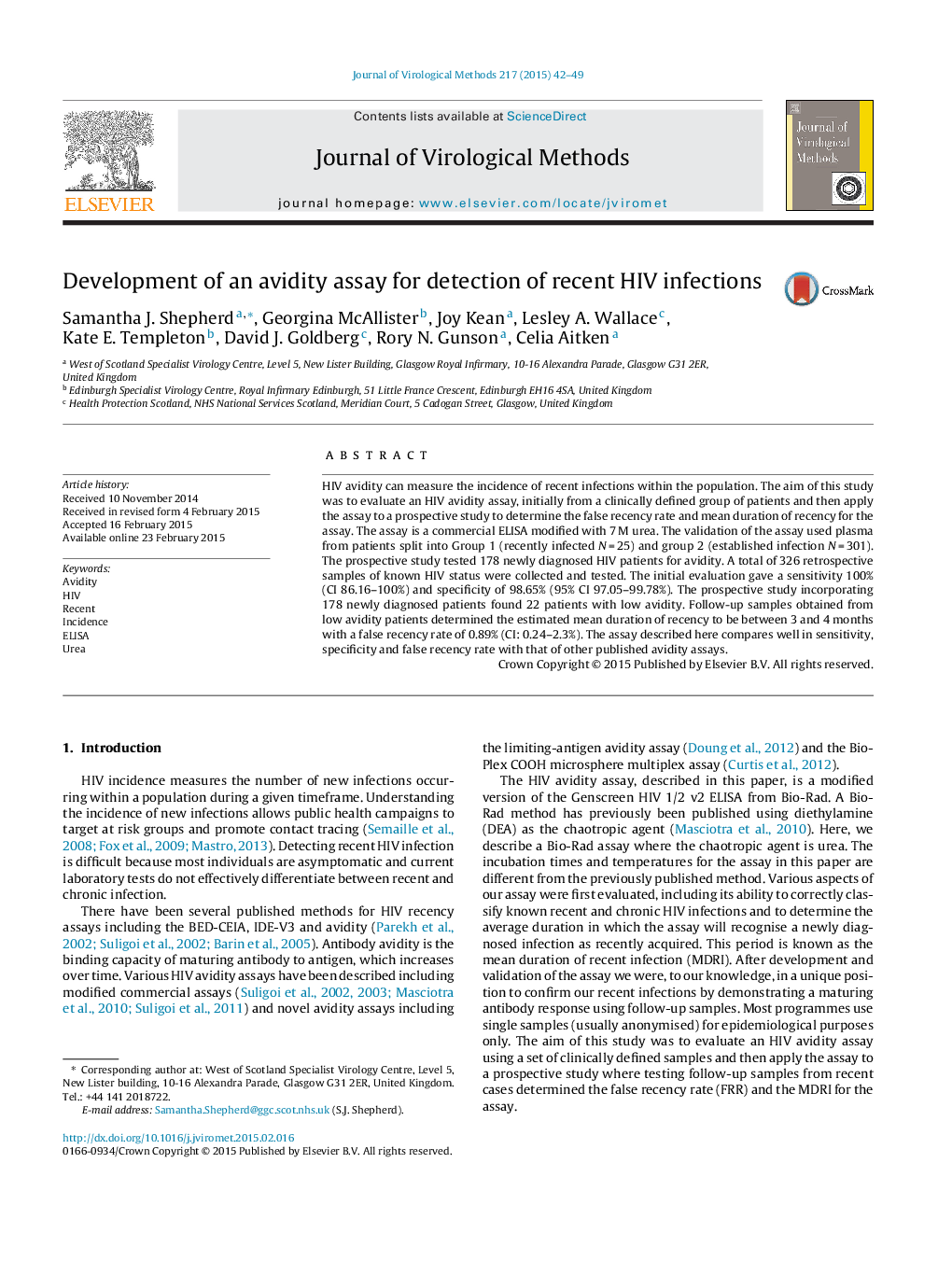| Article ID | Journal | Published Year | Pages | File Type |
|---|---|---|---|---|
| 6133341 | Journal of Virological Methods | 2015 | 8 Pages |
Abstract
HIV avidity can measure the incidence of recent infections within the population. The aim of this study was to evaluate an HIV avidity assay, initially from a clinically defined group of patients and then apply the assay to a prospective study to determine the false recency rate and mean duration of recency for the assay. The assay is a commercial ELISA modified with 7Â M urea. The validation of the assay used plasma from patients split into Group 1 (recently infected NÂ =Â 25) and group 2 (established infection NÂ =Â 301). The prospective study tested 178 newly diagnosed HIV patients for avidity. A total of 326 retrospective samples of known HIV status were collected and tested. The initial evaluation gave a sensitivity 100% (CI 86.16-100%) and specificity of 98.65% (95% CI 97.05-99.78%). The prospective study incorporating 178 newly diagnosed patients found 22 patients with low avidity. Follow-up samples obtained from low avidity patients determined the estimated mean duration of recency to be between 3 and 4 months with a false recency rate of 0.89% (CI: 0.24-2.3%). The assay described here compares well in sensitivity, specificity and false recency rate with that of other published avidity assays.
Related Topics
Life Sciences
Immunology and Microbiology
Virology
Authors
Samantha J. Shepherd, Georgina McAllister, Joy Kean, Lesley A. Wallace, Kate E. Templeton, David J. Goldberg, Rory N. Gunson, Celia Aitken,
